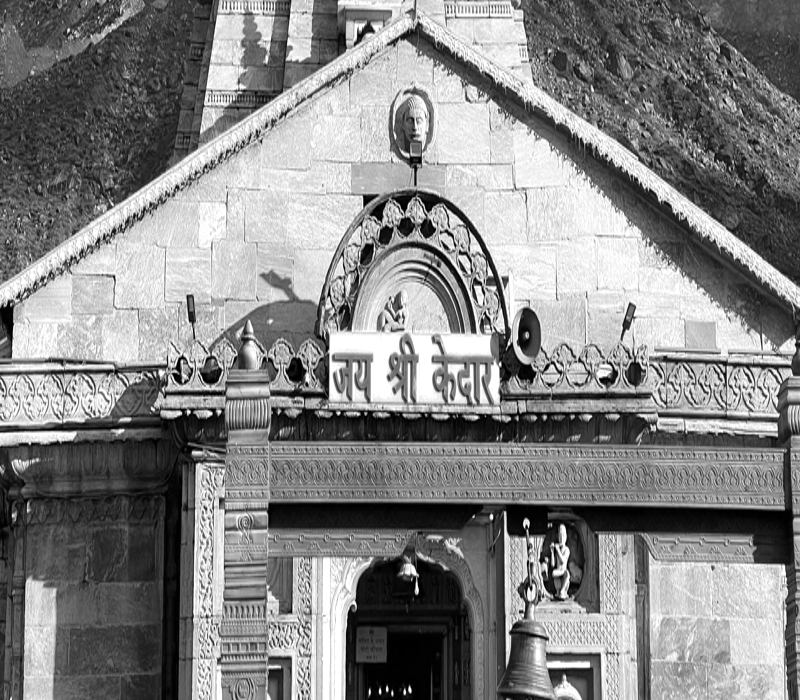- Offices: Dehradun | Dwarka New Delhi
Juda Ka Talab is a high-altitude lake situated at approximately 2,700 meters (8,858 feet) above sea level in the Uttarkashi district of Uttarakhand, India. This serene lake is a prominent feature on the trekking route to the Kedarkantha peak, attracting adventurers and nature enthusiasts alike.
Location and Access
he lake is located about 4 kilometres from Sankri village, which serves as the base camp for the Kedarkantha trek. The journey from Sankri to Juda Ka Talab takes trekkers through dense forests adorned with pine and oak trees, offering a tranquil and picturesque experience. The trail is well-defined, making it accessible to both novice and experienced trekkers.
Historical and Mythological Significance
According to local legends, Lord Shiva once meditated at this spot. It is believed that he opened a small lock of his hair, and the water that dripped from it formed the lake, giving it the name "Juda Ka Talab," which translates to "Lake of Locks." This mythological association adds a spiritual aura to the site, making it a place of reverence for many visitors.
Nearby Attractions
While Juda Ka Talab itself is a captivating destination, the surrounding region offers several attractions:
- Kedarkantha Peak: Standing at an elevation of 3,800 meters (12,467 feet), Kedarkantha is a popular trekking destination known for its panoramic views of the Himalayas. The trek from Juda Ka Talab to the summit is challenging yet rewarding, making it a favourite among adventure seekers.
- Sankri Village: This quaint village serves as the base camp for treks to Juda Ka Talab and Kedarkantha. Sankri offers a glimpse into the local culture and traditions of the region, with its wooden houses and hospitable residents. The village is also known for the Someshwar Mahadev Temple, dedicated to Lord Shiva.
- Govind Wildlife Sanctuary: Encompassing the area around Sankri and Juda Ka Talab, this sanctuary is home to diverse flora and fauna, including species like the Himalayan black bear, musk deer, and various bird species. Nature enthusiasts can explore the rich biodiversity of the region while trekking.
Boating
Due to its high altitude and relatively small size, boating facilities are not available at Juda Ka Talab. The lake often freezes during winter months, creating a solid ice surface, which further precludes any boating activities. Visitors are encouraged to enjoy the natural beauty of the lake through photography, meditation, or simply soaking in the serene environment.
Best Time to Visit
- Winter (December to April): During these months, the lake is often frozen, and the surrounding landscape is blanketed in snow, creating a winter wonderland. This period is ideal for those seeking a snow trekking experience. However, temperatures can drop significantly, ranging from -7°C to 16°C, so adequate preparation is essential.
- Summer (May to June): As the snow melts, the region transforms into a lush green haven with blooming wildflowers. The pleasant temperatures, averaging between 15°C to 17°C during the day, make it a comfortable time for trekking. Nights can be cooler, so carrying light woollens is advisable.
- Monsoon (July to September): This period is generally avoided due to the risk of landslides and slippery trails caused by heavy rainfall. The dense forest can also become a breeding ground for insects, making trekking less enjoyable.
- Autumn (October to November): The post-monsoon season offers clear skies and rejuvenated landscapes. The temperatures begin to drop, especially in November, but the crisp air and vibrant foliage make it a picturesque time to visit.
Trekking Experience
The trek to Juda Ka Talab is considered moderate, making it suitable for beginners with a reasonable fitness level. The trail from Sankri to the lake spans approximately 4 kilometers and can be covered in 3 to 4 hours. Trekkers traverse through dense forests, cross small streams, and navigate gradual ascents, all while being enveloped by the natural beauty of the Himalayas.
Camping at Juda Ka Talab is a highlight for many trekkers. The campsite near the lake offers a serene environment, with the reflection of towering pine trees and the surrounding mountains mirrored in the clear waters. At night, the starlit sky adds to the enchanting experience, making it a memorable stopover en route to Kedarkantha.
Flora and Fauna
- Flora: The trek passes through forests dominated by pine, oak, and maple trees. During the summer months, the trail is adorned with wildflowers, including rhododendrons and dandelions, adding vibrant colors to the landscape.
- Fauna: While wildlife sightings are rare due to the presence of trekkers, the area is home to species like the Himalayan black bear, musk deer, and a variety of birds. Birdwatchers can spot species such as the Himalayan monal, pheasants, and other high-altitude birds.

